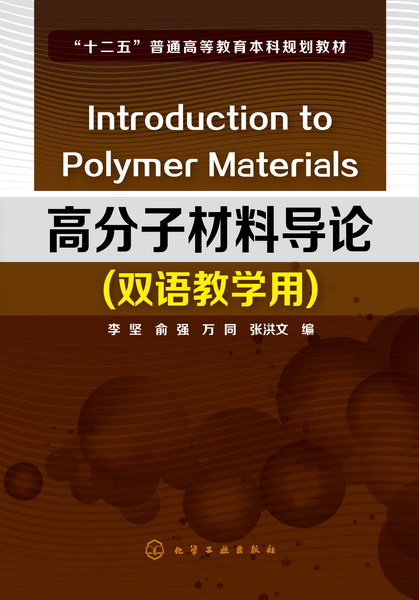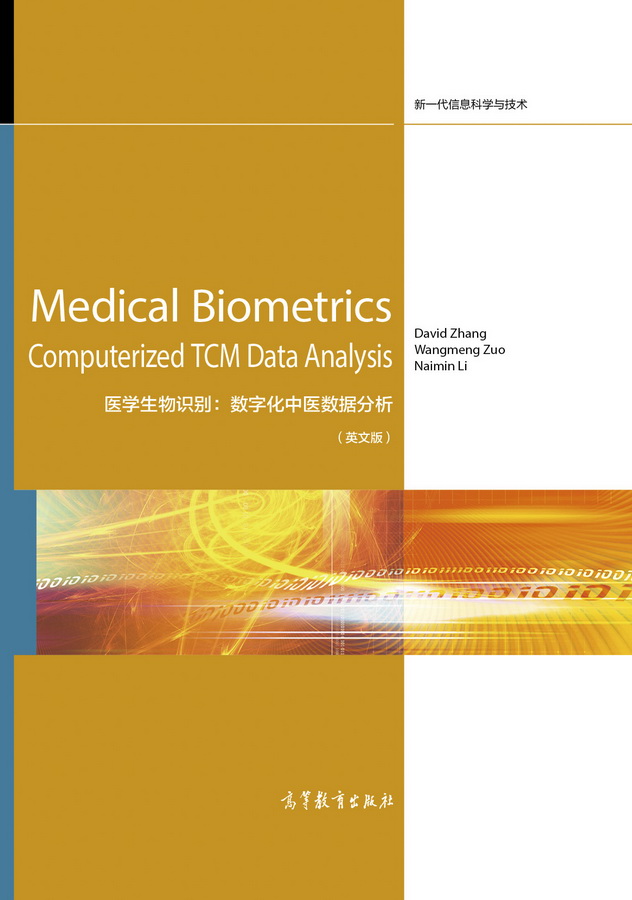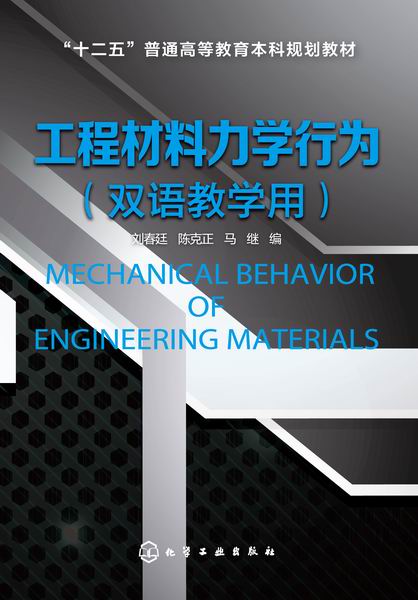肿瘤靶向诊治纳米材料(英文版)
作者: 谭明干,吴爱国
出版时间:2015-12-16
出版社:高等教育出版社
- 高等教育出版社
- 9787040429244
- 1版
- 81761
- 46255108-6
- 精装
- 特殊
- 2015-12-16
- 500
- 395
- 医学
- 临床医学
- 材料类
- 研究生及以上
本书是作者根据多年来从事肿瘤靶向诊治纳米材料的研究成果并结合国内外相关领域发展而撰写的一部学术专著。全书以多功能纳米材料的制备、应用为主线,全面、系统地介绍了磁性纳米材料、半导体量子点材料、介孔硅纳米材料、聚合物纳米材料、碳基纳米材料、金纳米材料、稀土上转换纳米材料、生物仿生多肽及树状分子等功能性纳米材料在肿瘤及生物医学成像、诊断和靶向治疗一体化方面的应用,并结合相关的研究前沿展望了其发展趋势。书中着重从基础科学的角度理解功能性纳米材料及其应用,目的是使研究者,尤其是初学者,阅读本书后能够对功能性纳米材料在生物医学诊治,尤其是在肿瘤的靶向诊疗一体化方面有一个比较全面的认识,进而掌握并拓展其应用领域。期望本书能够加深读者对肿瘤的靶向有效诊治及个性化诊疗的兴趣,引发更深入的探究。
本书可供影像学、医学工程、化学、材料及临床医学等领域,尤其是从事纳米生物、纳米医学、临床影像学等领域的科技工作者和工程技术人员参考,也可供高等院校、科研院所等相关专业的教师和研究生参考。
Front Matter
Chapter 1 Nanomaterials as Therapeutic/Imaging Agent Delivery
Vehicles for Tumor Targeting Theranostics
Mingqian Tan, Yanfang Wang, Xiaojie Song, and Yaqi Wu
1.1 Introduction
1.2 Strategies for Nanomaterials as Delivery Vehicles for Tumor Theranostics
1.3 Targeting Effects of Nanomaterials
1.3.1 Passive Targeting
1.3.2 Active Targeting
1.4 Multifunctional Theranostic Systems
1.4.1 Medical Imaging Modalities
1.4.2 Magnetic Nanomaterials
1.4.3 Quantum Dots
1.4.4 Mesoporous Silica Nanoparticles
1.4.5 SERS Gold/Silver Nanomaterials
1.4.6 Polymeric Nanosystems
1.4.7 Carbon Nanomaterials
1.4.8 Lipopolyplex Nanoparticles
1.4.9 Nano/Microbubbles
1.4.10 Upconversion Nanomaterials
1.4.11 Protein Nanomaterials
1.5 Conclusions and Future Perspective
Acknowledgments
References
Chapter 2 Basics of Theranostics in Tumor
Huichao Zou, Yaohua Liu, and Shiguang Zhao
2.1 Introduction
2.2 Nanoplatforms
2.3 Nanoprobes
2.4 Nanocarriers
2.5 Nanodiagnostics
2.6 Safety Issues and Future Direction
References
Chapter 3 Magnetic Nanomaterials for Tumor Targeting Theranostics
Leyong Zeng, Zheyu Shen, and Aiguo Wu
3.1 Introduction
3.2 Paramagnetic Nanomaterials for Theranostics
3.2.1 Introduction to Magnetic Resonance Imaging and Paramagnetic Nanomaterials
3.2.2 Synthesis of Paramagnetic Nanomaterials
3.2.3 Paramagnetic Nanomaterials for Tumor Targeting Diagnosis
3.2.4 Paramagnetic Nanomaterials for Tumor Targeting Theranostics
3.2.5 Overview
3.3 Superparamagnetic Nanomaterials for Theranostics
3.3.1 Introduction to Superparamagnetic Nanomaterials
3.3.2 Synthesis of Superparamagnetic Nanomaterials
3.3.3 Superparamagnetic Nanomaterials for Bioimaging
3.3.4 Superparamagnetic Nanomaterials for Theranostics
3.3.5 Overview
3.4 Outlook
Acknowledgments
References
Chapter 4 Quantum Dots (QDs) for Tumor Targeting Theranostics
Yufei Ma, He Shen, Mengxin Zhang, and Zhijun Zhang
4.1 Introduction
4.1.1 Fluorescence of QDs
4.1.2 History of QDs and Their Biomedical Applications
4.2 Synthesis, Modification and Functionalization of QDs
4.2.1 Synthesis of QDs
4.2.2 Surface Modification
4.2.3 Functionalization
4.3 QDs for Bioimaging
4.3.1 In Vitro Imaging
4.3.2 In Vivo Imaging
4.3.3 Cancer Imaging
4.4 QDs for Theranostics
4.4.1 QDs for Gene Delivery
4.4.2 QDs for Drug Delivery
4.4.3 QDs for Photodynamic Therapy
4.5 Biosafety of QDs
4.5.1 Cellular Uptake Mechanisms of QDs
4.5.2 Cytotoxicity of QDs
4.5.3 In Vivo Fate and Toxicity of QDs
4.6 Outlook
References
Chapter 5 Mesoporous Silica Nanoparticles (MSNs) for Cancer Theranostics
Yu Hsia, Maharajan Sivasubramanian, Nai-Tzu Chen, and Leu-Wei Lo
5.1 Traditional Nanocarriers and Current Challenges
5.2 Design of MSNs
5.2.1 Why Use MSNs?
5.2.2 Synthesis
5.2.3 Surface Modification
5.2.4 Cellular Uptake/Exocytosis/Biocompatibility/Biodistribution
5.3 MSNs as a Drug Carrier
5.3.1 Anticancer Drugs Delivery
5.3.2 Cargo Release
5.4 MSNs as Theranostic Agents
5.4.1 Diagnostic Applications of MSNs
5.4.2 Therapeutic Applications of MSNs
5.4.3 Gene Delivery System
5.5 Multifunctional Design of MSNs
5.5.1 Hybrid Materials
5.5.2 Core-shell Particles
5.5.3 Multifunctional MSNs
5.6 Future Perspective
References
Chapter 6 Surface Enhanced Raman Scattering (SERS)Nanoprobes as Cancer Theranostics
Meikun Fan
6.1 Introduction
6.1.1 Raman Scattering
6.1.2 Resonance Raman Scattering
6.1.3 Localized Surface Plasmons and SERS
6.2 Development of NPs Based SERS Probe
6.2.1 SERS NPs Made of Single Pure Plasmon Supporting Metals
6.2.2 Bimetallic SERS NPs
6.2.3 Dielectric-metal Complex SERS NPs
6.2.4 NPs Decorated Carbon Material as SERS Probe
6.2.5 Other SERS Probes
6.3 SERS Theranostics
6.3.1 Advantages of SERS Theranostics
6.3.2 Encoding of SERS Nanoprobes and Modification for Targeting Bio-analytes
6.3.3 SERS Theranostics: Current State
6.4 Limitation and Future Development
References
Chapter 7 Polymeric Nanosystems for Targeted Theranostics
Yongyong Li, Huiyun Wen, Haiqing Dong, Aijun Shen,Tianbin Ren, and Donglu Shi
7.1 Introduction
7.2 Merits of Polymeric Nanosystem
7.2.1 Potential Biocompatibility
7.2.2 Easy Functionality
7.2.3 Passive and Active Targeting
7.3 Polymer Entities for Nanosystem Design
7.3.1 PEG Derivatives
7.3.2 Polypeptide
7.3.3 Biopolymer
7.4 Polymeric Nanosystems for Theranostics
7.4.1 Polymeric Theranostics for MRI and Drug Delivery
7.4.2 Polymeric Theranostics for US Imaging and Drug Delivery
7.4.3 Polymeric Theranostics for Optical Imaging and Drug Delivery
7.4.4 Polymeric Theranostics for Dual-imaging and Drug Delivery
7.5 Perspectives and Concluding Remarks
References
Chapter 8 Carbon Nanomaterials for Tumor Targeting Theranostics
Jo˜ao M. M. Leit˜ao, Eliana F. C. Sim˜oes, and Joaquim C. G. Esteves da Silva
8.1 Introduction
8.2 Tumor Theranostic Applications of Carbon Nanomaterials
8.2.1 Tumor Theranostics Applications of Carbon Nanotubes
8.2.2 Tumor Theranostics Applications of Graphene
8.2.3 Tumor Theranostics Applications of Carbon Dots
8.2.4 Tumor Theranostics Applications of Fullerene
8.2.5 Tumor Theranostics Applications of Nanodiamonds
8.3 Future Perspectives
Acknowledgments
References
Chapter 9 Lipopolyplex Nanoparticles for Tumor Targeting Theranostics
Fengying Dai and Xin Zhang
9.1 Introduction
9.2 Nonviral Gene Vectors
9.2.1 Cationic Liposomes
9.2.2 Cationic Polymers
9.2.3 In Vivo Barriers to Cationic Nonviral Gene Delivery
9.3 Tumor Targeting Nonviral Gene Therapeutic
9.3.1 Inactive Target
9.3.2 Specific Target Gene Delivery
9.3.3 Stimuli-sensitive Gene Delivery
9.4 Agents Combined Imaging and Gene Delivery
9.4.1 Optical Imaging
9.4.2 Magnetic Resonance Imaging (MRI)
9.4.3 Positron Emission Tomography (PET)
9.5 Summary
References
Chapter 10 Microbubbles for Tumor Targeting
Theranostics
Daming Yong, Xuejing Wang, Lei Wang, and Xiaojun Han
10.1 Introduction
10.2 The Preparation of Microbubbles
10.2.1 Shell Materials
10.2.2 Microbubble Fabrication
10.2.3 Methods of Loading the Therapeutic Agent
10.3 Application of Microbubbles for Tumor Targeting Theranostics
10.3.1 Microbubble-based Molecular Ultrasound Imaging of Tumor
10.3.2 Microbubbles for Drug Delivery
10.3.3 Microbubbles for Gene Delivery
10.4 Future Aspects
References
Chapter 11 Upconversion Nanomaterials for Tumor Targeting Theranostics
Wei Wang
11.1 Introduction
11.2 Upconversion Nanomaterials for Tumor Imaging
11.2.1 Upconversion Fluorescent Imaging
11.2.2 Fluorescent-MRI/CT/PET Multi-model Imaging
11.3 Tumor Photodynamic Therapy
11.3.1 Mechanism of Photodynamic Therapy
11.3.2 Applications of Upconverting Nanoparticles in Photodynamic Therapy
11.4 Drug/Gene Delivery
11.5 Dye Sensitized Efficiency of UC
11.6 Conclusions
References
Chapter 12 Functional Dendrimers as Nanoscale Theranostic Vehicles for Cancer Treatment
Kui Luo and Zhongwei Gu
12.1 Introduction
12.2 Dendrimers for Cancer Diagnosis and Therapy
12.3 Functional Dendrimers as Theranostic Nanoscale Vehicles for Cancer Treatment
12.3.1 Dendrimer Based Photodynamic Therapy
12.3.2 Dendrimer/Magnetic Nanoparticle Hybrid Nanoparticles
12.3.3 Gadolinium(III)-labeled Dendrimers Based Drug Delivery Vehicles
12.4 Functional Dendrimers Labeled with Optical Probes as Drug Delivery Vehicles
12.5 Conclusions
References
Chapter 13 Protein-based Nanoparticles for Tumor Targeting Theranostics
Yang Liu, Hao Wu, and Huihui Wang
13.1 Introduction
13.2 Albumin Nanoparticles for Tumor Targeting Theranostics
13.2.1 Albumin Nanoparticles
13.2.2 Preparation Techniques for Albumin Nanoparticles
13.2.3 Albumin Nanoparticles for Anti-tumor Drug Targeted Delivery
13.2.4 Albumin Nanoparticles for Targeted Tumor Imaging
13.2.5 Albumin Nanoparticles for Photodynamic Therapy
13.3 Outlook
Acknowledgments
References
Chapter 14 Conclusions and Future Perspectives
Shanmin Gao and Narayan S. Hosmane
14.1 Topical Background and Conclusions
14.1.1 Magnetic Nanomaterials
14.1.2 Semiconductor Quantum Dots (QDs)
14.1.3 Mesoporous Silica Nanoparticles (MSNs)
14.1.4 Surface Enhanced Raman Scattering (SERS)
14.1.5 Polymeric Nanostructures
14.1.6 Carbon Nanomaterials
14.1.7 Lipoplexes and Polyplexes Nanoparticles
14.1.8 Nano/Microbubbles Technology
14.1.9 Upconversion Nanomaterials
14.1.10 Functional Polymeric Dendrimers
14.1.11 Protein-based Nanoparticles
14.2 Future Perspectives of Theranostics
Abbreviation Index
Color Figures



















